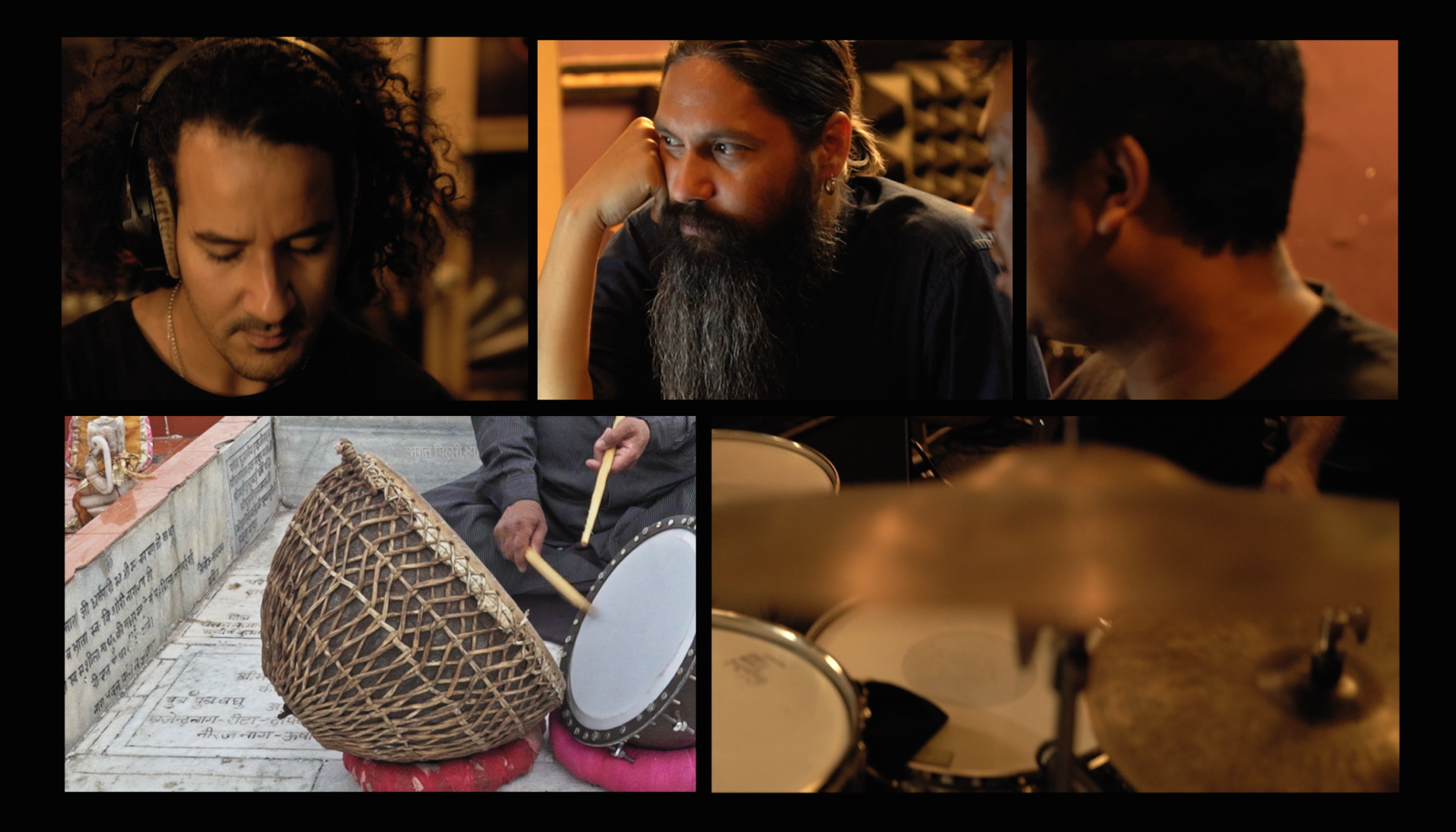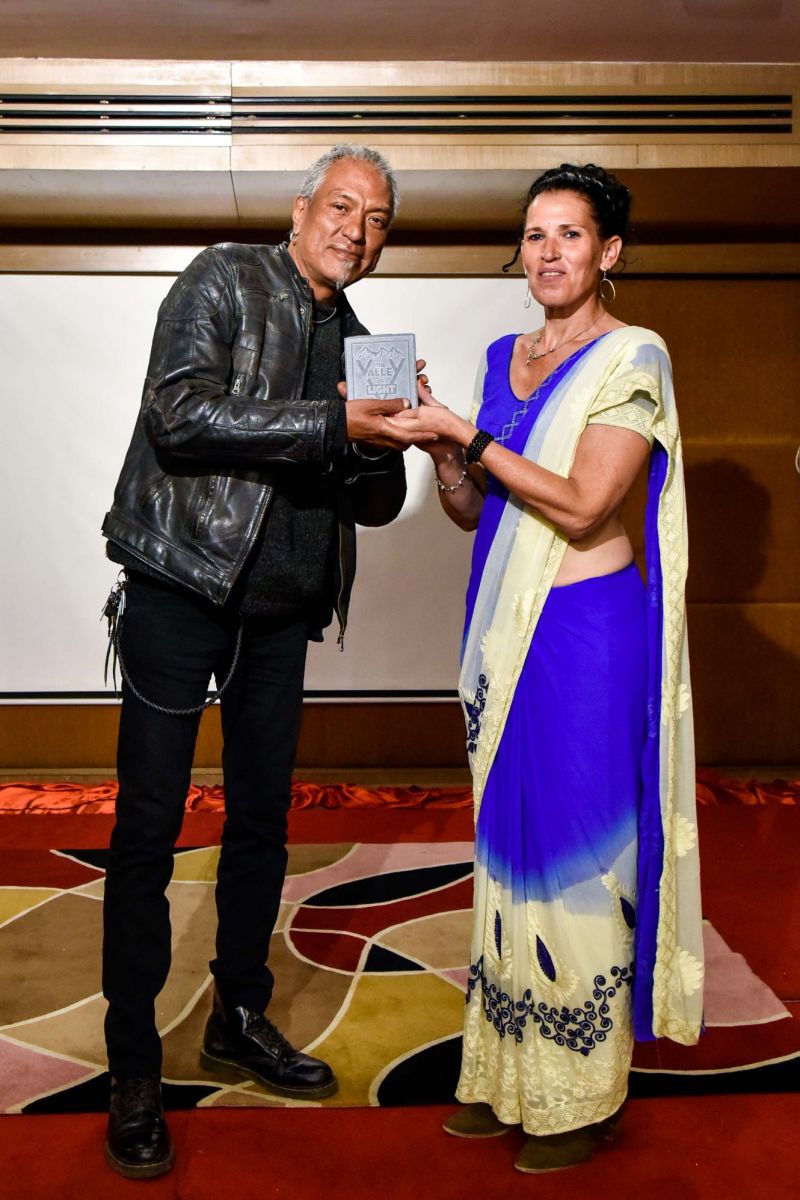 Born on the Mediterranean side of the world, Mira Arad was named after her German grandmother, Miriam. After graduating from the Bezalel Academy of Art and Design (Jerusalem), she started working as a freelancer. While working on some internationally well-received film projects, she had planned to do a documentary-based television show about the Himalayas. But when she heard about the massive earthquake that shook Nepal in 2015 while she was in Mexico, there was no stopping the filmmaker from coming back to this part of the world once again to embark on an epic music video project—The Valley of Light. Mira had come to visit the country at the age of 22 for trekking in the Himalayas. Her journeys had taken her to the Annapurna Base Camp and Langtang then, and later, to Tibet too; she felt a strong connection to this place.
Born on the Mediterranean side of the world, Mira Arad was named after her German grandmother, Miriam. After graduating from the Bezalel Academy of Art and Design (Jerusalem), she started working as a freelancer. While working on some internationally well-received film projects, she had planned to do a documentary-based television show about the Himalayas. But when she heard about the massive earthquake that shook Nepal in 2015 while she was in Mexico, there was no stopping the filmmaker from coming back to this part of the world once again to embark on an epic music video project—The Valley of Light. Mira had come to visit the country at the age of 22 for trekking in the Himalayas. Her journeys had taken her to the Annapurna Base Camp and Langtang then, and later, to Tibet too; she felt a strong connection to this place.
"I do projects that have a deep meaning and carry their own wisdom," says Mira. She also believes in productions that have their own causes—probably a consciousness of their own. As her works so suggest; the films, documentaries, and music videos that have been an important part of her profile include 1 Giant Leap (double Grammy nominated), A Film About Zen (Israeli Oscar nominated), Piris Eliyahu (2nd place, International Folk Music Film Festival, Nepal, 2011), and eventually, The Valley of Light—a music video project dedicated to spreading peace and unity through music and visual production—featuring some of the most popular musicians and reputed individuals, mostly from Nepal, India. and several other countries.
During one of her earlier visits to Nepal, Mira lived near Swoyambhu at a friend's house for some time and experienced the ways of Buddhist life there. She had also heard a song with the temple's title, written by a local rock celebrity, Robin Tamang, and Tsering Gellek. Earlier, Gellek had significantly funded the renovation of the Stupa itself. "I already felt connected with the song," she describes her first impressions of it.
Eventually, she ended up renaming and re-producing the song with the help of music arranger Ranzen Jha and sound engineer Sunit Kansakar. Also, she appointed Duncan Bridgeman, producer of 1 Giant Leap, and Manose Newa as its music videos mentors. "Ranzen was willing to take up this project with enthusiasm and understood its essence," says Mira. She also praises Kansakar for his hard work and thanks Newa and Bridgeman for helping her see this project through to its good end.
Mira's love for Nepal and her Nepali friends had made her come here right after the earthquakes of 2015. But upon her arrival, she realized that she felt helpless like the rest of the people who faced the disaster. The protagonist (actress Mala Limbu) in The Valley of Light, who visits Swoyambhunath Temple and breaks down in tears, enacts this state of the filmmaker. Later, in winter of the same year, she came back with a new errand: production of the music video itself.
 Upon her arrival, Mira had to face the trade blockade imposed by India, along with the shortage of resources prevalent at that time. Although she knew that music and film production had its own special powers to change reality, it was hard for her to put it into immediate effect in that context. Later on, she would try to break the social biases between the two countries by involving renowned Nepali and Indian musicians in her project, including A.R. Rahman’s music school. “Both countries have so much in common to share," she says.
Upon her arrival, Mira had to face the trade blockade imposed by India, along with the shortage of resources prevalent at that time. Although she knew that music and film production had its own special powers to change reality, it was hard for her to put it into immediate effect in that context. Later on, she would try to break the social biases between the two countries by involving renowned Nepali and Indian musicians in her project, including A.R. Rahman’s music school. “Both countries have so much in common to share," she says.
In 2016, Mira could finally start making her dream project come alive with a precise view of its theme and purpose, backed up by the right partners for it to happen. "The idea was to make a music video of a song that was similar to 'We Are The World’—involving as many singers and musicians from Nepal and around the world, eventually helping spread a genuine message of peace and unity," she asserts.
Previously, Mira had worked for two other significant documentaries. One was shot in Israel and was titled A Film About Zen. The other was based upon Sufi culture of India, one that never got released. The former was about how dogs helped blind people find their way through the streets. It won her several international acclaims and awards. As the incomplete latter project was based on music culture, the amalgamation of both these contexts led her to create this particular music video project here in Nepal.
2008 was the year when Mira attended the Himalayan Blues Festival in Kathmandu. She had made friends with the band members of JL Stiles and Pax Armada then. They had come from Mexico and Spain, respectively, to perform at the event. She met Robin Tamang and sarangi player Shyam Nepali during that time as well. Though it was her first meeting with Tamang, Mira was impressed with his creativity from the start.
Before starting the journey of The Valley of Light, Mira had a very important musical encounter. That was in 2005, when she had a chance to meet and film Bob Marley’s family members in Ethiopia. They had all come to attend a big concert under the banner ‘Africa Unite’. This event was significant in recognizing Haile Selassie as the prophet of the Rastafarians for the first time in their history. “Almost half a million people attended the concert,” says Mira, who had a very important insight with this experience: uniting people via music and art.
The Sufi sheikh, Ajmer, had once advised Mira to pursue things that would benefit and represent the whole of society. Hence, the lyrics of the song (“Valley of Light”) also matched her desire to help and involve as many people as she could in this project. In one of her stays in India during the filming process, Mira finalized the filming of Pushkar, the naggara player who was also featured in 1 Giant Leap. It addition, she also visited A.R. Rahman’s music school, as the latter had agreed to involve some of his young students in the song’s music video.
 Besides Ranzen and Sunit, Mira's meetings with artists and production members like photographer Prabin Manandhar; artist manager Vidushi Rana; singer Adrian Pradhan; visual artist and didgeridoo player Salil Subedi, as well as other known Nepali musicians took this project to a whole new level. She could now relate her own objective feelings with that of other prominent artists and coordinators in Nepal’s local music scene—to help the Nepali people overcome their grief via music and visual arts.
Besides Ranzen and Sunit, Mira's meetings with artists and production members like photographer Prabin Manandhar; artist manager Vidushi Rana; singer Adrian Pradhan; visual artist and didgeridoo player Salil Subedi, as well as other known Nepali musicians took this project to a whole new level. She could now relate her own objective feelings with that of other prominent artists and coordinators in Nepal’s local music scene—to help the Nepali people overcome their grief via music and visual arts.
“When I approached the artists, they immediately understood that this was an international project,” says Mira. The recording process of the song had taken about three months. Her travels to and from Nepal via Los Angeles and London during the song’s production led to the inclusion of the drummer of Macy Gray and much involvement of Bridgeman’s team for the project’s creative supervision. Mira left no stone unturned; she even tried to contact Cat Stevens, Brian Adams, and Ziggy Marley for their involvement.
A total of around eighty musicians and crew members were to be featured in the song’s production, as well as its music video. The visual that included Mira’s own story as the protagonist incorporates her meeting with a stone carver in Swoyambhu during her first visit to the temple premises in 1994. The latter had carved her name in a stone locket in Hebrew, back then – “MIRA”.
In the video, a young kid, Saddam Khatung, cheers up Mira's counterpart. He is one of the children being helped by the Sano Sansar NGO, and other children supported by them are also featured for the choral section of the song, along with music students from the school in Patan "Playing For Change Foundation." The other important involvement of young students is from A.R. Rahman’s music conservatory itself. “This would not have been possible without my Scottish colleague Adam, Rahman’s sister Fatima, and A.R. Rahman himself,” Mira explained.
The European Union (EU) was wise enough to recognize the value of Mira’s project early on, and became her first partner. Later on Nepal Tourism Board (NTB) also embraced the project, and Turkish Airlines also provided significant support.
“It was sometimes hard for me to organize meetings and follow deadlines,” she adds. To encourage her, Duncan would tell her things like, “Things take as long as they take. Well done for keeping on, keeping on—that's where the beauty lies.”
Indeed, Mira kept on doing what she had faith in. Finally, on International Peace day on September 21, 2018, the music video for The Valley of Light was released in Kathmandu and globally on digital platforms. It was also followed up by a felicitation program featuring dignitaries from the EU and NTB at Hotel Radisson in Lazimpat, where all of the participants were given certificates for their efforts.
Responses to the production have been an overwhelming experience for Mira. It was followed by a BBC Radio broadcast and significant views on digital platforms like Facebook and YouTube. Also, the music school in Patan that she was trying to help—financially, for its renovation—got multiple attentions from donors of different organizations.
A believer in Mira Bai, almost as if she is her reincarnation, she acknowledges her wish to be close to music and musicians, as she etches out new ventures in filmmaking in the days to come. Her spiritual connection with Nepal and its culture is also something that she believes is now a major part of herself. “I will now move on to another part of the world, where I will be doing other projects to help uplift individuals morally,” she concludes. With this ending note, she also expresses her best wishes to Nepal and its people at the top of the world!










